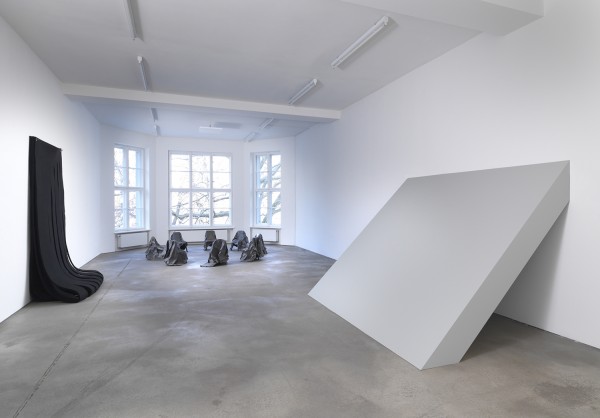Robert Morris
Thursday, 30 May 2013
Robert Morris
Work from his oeuvre.
“Morris’s early sculpture tended to emphasize a banal repertoire of form and subject-matter, while attempting to investigate the role of language in artistic representation. Metered Bulb (1963; Jasper Johns priv. col., see 1971 exh. cat., p. 57), in which a working lightbulb is displayed with an electric company meter monotonously recording its energy expenditure, is typical of his early work’s use of unconventional expressive means. At the same time, however, Morris continued his involvement with performance art, for which he reunited with former collaborators Walter De Maria, Yvonne Rainer (b 1934) and La Monte Young (b1935), who had also moved to New York. Through an influential series of articles that began to appear, irregularly, in the New York art press c. 1966, Morris assumed a highly visible position in determining both the objectives and the tenor of Minimalism in America, then in its early stages. Yet, while his impersonal and often doctrinaire manifestos were received favourably by a large number of young artists, he himself was frequently regarded as provocative and even flamboyant. This apparent schism posed some difficulties for critics who found his enigmatic behaviour hard to reconcile with the comparative reserve of other leading sculptors drawn to the movement. It led a number of critics to associate Morris’s irreverence with the highly controversial activities of the Fluxus group, despite the fact that his first New York gallery exhibitions consisted of large conceptually inspired pieces, such as Untitled (0.7 m cubes of plexiglass mirror on wood, 1965; see 1971 exh. cat., p. 22), whose scale and geometric simplicity had much in common with Minimalism. Indeed, this type of sculpture maintained a privileged place within his output during the 1970s, although his practice increasingly moved beyond the constraints of conventional media.
For the next ten years Morris’s work was characterized by the use of ephemeral materials. He experimented with heavy felt, mirrors, textile waste products, steam and dirt in an effort to dematerialize the object, creating works that could be appreciated only briefly before they disappeared or were removed by the artist, for example Untitled (steam, 1968–9; see 1971 exh. cat., p. 122). The photographic documentation of these works was often the only material trace of these attempts to negate the very physicality of the artistic gesture.
In the light of this ambition, it is even more startling to consider Morris’s work of the 1980s, for example Untitled (1983; New York, Robert and Nancy Kaye priv. col., see 1986 exh. cat., p. 49), part of the Firestorm series. Morris returned to drawing and painting at this time, producing works of a heroic scale. Through an integration of sculpture and two- dimensional images, he evoked an apocalyptic vision of the modern world. Using ‘Hydrocal’ and welded steel to create dark framing elements that bear skulls and other body parts in their relief panels, he set into these frames canvases whose lush landscapes are evocations of the apocalypse or holocausts. In abandoning issues of the phenomenology of the work of art, which had so deeply and consistently affected the first 20 years of his activity, Morris may have ultimately adopted a bleaker vision of the questions that surrounded artistic practice towards the end of the 20th century.” – Derrick R. Cartwright, MoMA


